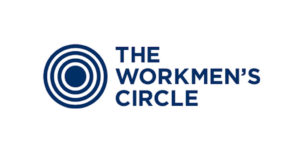
Key Accomplishments
∙ Identification of program priorities
∙ Strategies for increasing program size
∙ Construction of detailed implementation plan
Situation: Yeshivat Chovevei Torah (YCT) is an upstart, Modern Orthodox rabbinical school dedicated to reconnecting Jews to a meaningful and authentic Judaism. Started in 2000 by a charismatic rabbi, YCT was struggling to recruit enough students, raise enough funds and promote itself adequately after the founder retired in 2012.
A major Jewish foundation, the Jim Joseph Foundation, challenged YCT to create a strategic plan and then a business/implementation plan that would grow enrollment and income while focusing on YCT’s core competencies. The reward would be a multi-million grant from the Foundation.
Analysis: As a small school with no more than 45 or 50 students at any one time, YCT offers an intimate educational experience–at a very high cost. Most students pay little or no tuition, which means that YCT relies almost exclusively on philanthropic income. We worked with the senior management team and board to determine that YCT should stay focused on its core competency of educating rabbis rather than other constituent groups. We pushed the team to consider some growth despite the lack of a natural feeder program enjoyed by the mainstream Orthodox and Conservative rabbinical schools.
Result: We produced a strategic plan that the Foundation approved, and then a business plan with detailed implementation plans for each of the five areas of focus. The Foundation awarded the grant.

Key Accomplishments
∙ Strategic analysis of a changing society
∙ Implementation of reorganization
∙ Increasing donations
Situation: The Workmen’s Circle was a fraternal benefits society for immigrants from Eastern Europe. Since 1900, it had provided life insurance, health insurance, after school programs and other services to its members. Americans no longer receive their benefits from such societies, and the membership of the Circle diminished dramatically starting in the 1970’s.
In 2007, the organization hired a new Executive Director to take the WC into the 21st century. They decided to become a Jewish educational organization for those Jews who are no longer affiliated with Jewish congregations. Vivien Hoexter was hired by the Executive Director to create a three-year business plan to help begin the achievement of this new vision.
Analysis: Vivien worked closely with the Executive Director to define the products that the new WC would offer. She helped the Executive Director to design job descriptions and hire a senior team for the new organization. They put together a written plan with a month-by-month implementation plan for the first year. They worked with the finance department to put together budgets to go with the activities for each year. The board approved the plan unanimously in March 2012.
Subsequently, Ann asked Vivien to do a study on nonprofit affiliation models for the new network. After a comprehensive look at a wide range of models, from operating all affiliates as departments to establishing independent 501c3s for each affiliate, the team determined that initially the new schools should be departments of the New York organization to ensure the quality of the new program.
Result: Income from fundraising has gone from $200,000 to $1,000,000 in the five years since the plan was implemented. The Workmen’s Circle has become a Jewish educational organization with learning communities around the country. In these communities, children and their families study Jewish culture, history and traditions while learning about social activism. It is also teaches Yiddish to the most people outside of a university or college.

Key Accomplishments
∙ Assessment of core competencies
∙ Succession planning for founder
∙ Diversifying revenue sources
Situation: Vibrant Emotional Health (Vibrant) addresses health needs in New York City and across the nation. In late 2015, the CEO of 22 years announced her intention to retire in a year. She had taken the organization from $250,000 to $25 million in revenues during her tenure. The organization did not have a current strategic plan and wanted to create one both to ascertain the qualities and skills needed in a new leader and to give that new leader some initial direction.
Analysis: We worked with the senior staff and board planning committee to determine the organization’s core competencies. We focused particularly on Vibrant’s call/contact center technology because of its potential to reach many more people and produce income for the organization. The other two core competencies—advocacy and child, youth and family support services—are also priorities but, unlike the technology platform, are not unique.
It became clear that the organization would need greater infrastructure were it to continue to maximize the potential of technology-enabled services.
Result: Keenly aware of the dramatic changes taking place in Medicaid funding, the board and senior staff put together a plan around those competencies that involves investing in private fundraising and earned income opportunities while continuing the government funded programs that build on those competencies and make financial sense.
The organization has just completed a major re-branding effort and had $40 million in revenue in 2018.

